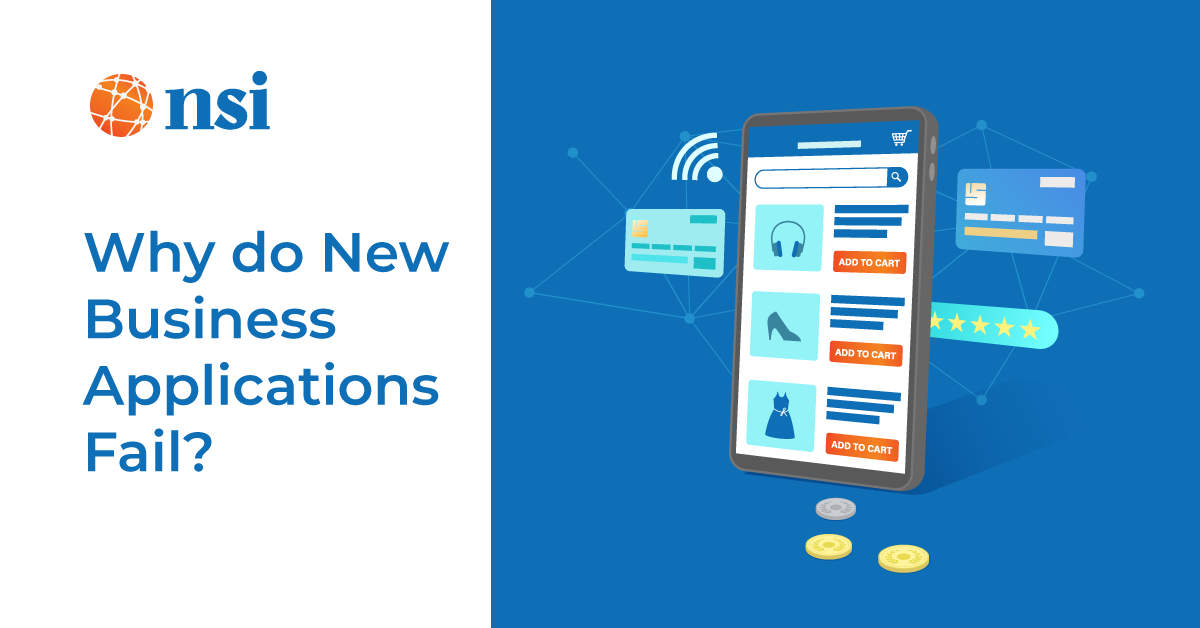If you go to the trouble of spending money on an app for your business, the last thing you want is for it to fail.
Many businesses create internal and external apps with the intention of improving their processes, operations, marketing, sales, and management. And they should.
Using apps to integrate your business processes is a proven way to use IT to improve business outcomes. However, if you spend time and money on an app that isn’t useful or one that doesn’t work for your users, you might as well have thrown your money in the trash.
At NSI, we’ve seen mistakes companies have made with their apps. Armed with this information, we can help keep your business app from being a failure so that it can be a success right out of the gate.
The 6 Mistakes That Cause Business Apps to Fail
To make the launch of your app successful, you should let the things you shouldn’t do guide what you should do.
Here are mistakes businesses make that you should avoid:
1. Not Evaluating the Big Picture and Starting With a Roadmap
If your company barrels forward with the idea of an app without sitting down to really evaluate what you need, your app is most likely doomed to fail.
Aligning your technology with your business goals is crucial. Thus, the first thing you should do is to look closely at the big picture of what problems you need to solve with your app.
Once you have a list of problems that your app needs to solve, you can go forward with creating a roadmap for your app related to your business goals.
2. Not Being Relevant to the Problems It Needs to Solve
If your app isn’t relevant to the problems it needs to solve, it’s useless.
It’s important to involve various stakeholders within your company in the decision-making stage to ensure that the app will actually solve real-life problems. Even if you’re investing in a ready-made app like Salesforce or HubSpot, it’s important that the people who will be using it within your company like the look and feel and find the interface useful for their needs.
3. Not Specifying Your Target Audience
Before you launch your app, you need to decide who the target audience is.
Is it an internal app for your employees or is it for clients and customers? Once you determine who the app is for, you can make a more focused app that will meet the target audience’s needs and expectations.
4. Not Recognizing the Competition
Not finding out what your competition is doing wrong and right with their apps is a huge mistake.
Looking at apps from your competition or that your competition is using internally has several advantages:
- It can keep you from reinventing the wheel.
- You can see what’s good and bad about their app and improve upon it.
- It can give you an idea of what customers expect.
- You can find out what apps other companies like yours are using as solutions.
5. Not Listening to User Feedback
If you launch your app and don’t pay attention to and address what internal users or customers don’t like about it, you’ll lose their interest fast.
User feedback helps you learn what they expect, what they like, and what they don’t like. If you’re not making your users happy, they’ll stop using the app, take their business elsewhere, or download someone else’s app that will do what they want.
6. Not Getting Everyone On Board With the New App
If you make mistakes when launching your app, your app may never recover.
Some launch mistakes that we often see include:
- Not advertising the new app well enough: If you don’t advertise the app well enough, you might as well not even have one. If people don’t know it exists, it’s going to lie dormant.
- Not getting everyone to adopt the new app: If everyone in your company doesn’t get on board with using the new app, you will find that you have holes in your communication and are not improving your productivity at the rate you planned.
- Not retiring the old app: If users are still able to use their old app, they may never migrate to the new app. Eventually, they will wander away altogether as components stop working for them.
Conclusion
If you plan to implement a new business app for your company, it’s vital that you have a clear image of what you want to do with it and how it’s going to solve your company’s problems. A little bit of planning and listening goes a long way toward the successful launch of a new app.
At NSI, we have lots of experience with the types of apps that companies like yours use to meet their business goals. We’ve seen the types of mistakes that companies have made with failed apps and are ready to help ensure yours is a success from the start.
Contact us to ask any questions you might have or book a meeting to find out how we can help make your app launch more successful.
